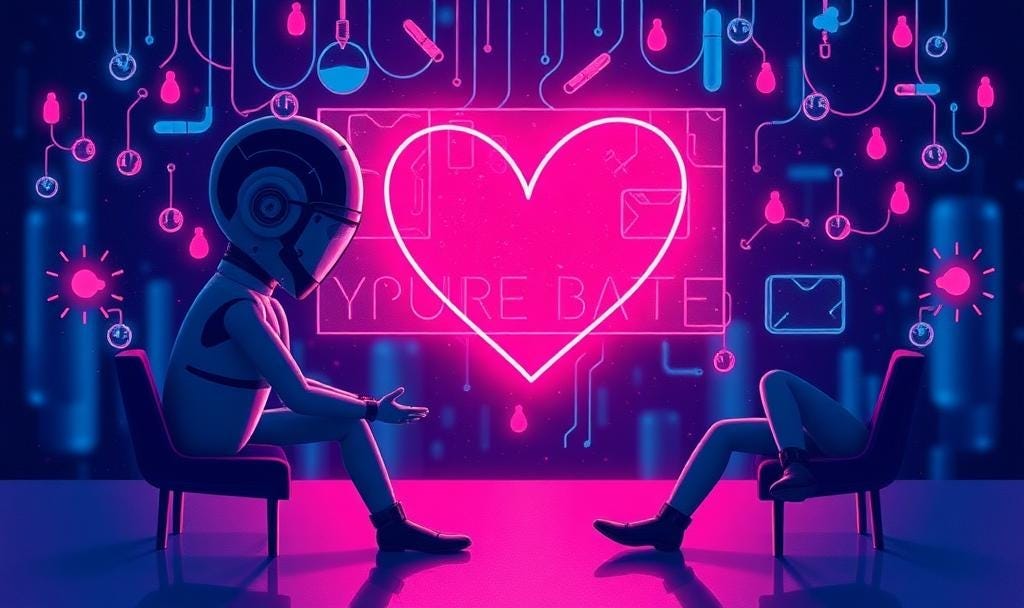TechBio and Psychedelics (I)
MetaphysicalCells: A newsletter about Science, Technology and AI Drug Discovery
This newsletter is dedicated to AI/ML and psychedelics.
TechBio and Psychedelics (I),
TechBio and Psychedelics (I)
Psychedelics are a class of psychoactive substances that alter perception, mood, and cognitive processes. Examples include: LSD (lysergic acid diethylamide), Psilocybin (found in "magic mushrooms"), DMT (dimethyltryptamine) and Mescaline (found in peyote and other cacti). Historically used in spiritual and therapeutic contexts, psychedelics are now being studied for their potential to treat mental health conditions like depression, Post-traumatic stress disorder (PTSD), and addiction. Research suggests they can promote neuroplasticity and facilitate profound shifts in consciousness.
🗣️ Drugs that activate the serotonin 5-HT2A receptor directly (typically termed classic psychedelics) as well as those that activate serotonin receptors indirectly or not at all, or that work through binding to a combination of receptors (including glutamatergic, dopaminergic, and opioidergic receptors) would all be considered psychedelic if they demonstrate the capacity for allowing greater access to the psyche in a manner similar to the classic psychedelics (ayahuasca, N,N-dimethyltrypatmine/DMT and 5-methoxy-DMT/5-MeO-DMT, ibogaine, ketamine, lysergic acid diethylamide/LSD, 3,4-methylenedioxymethamphetamine/MDMA, mescaline, salvinorin A, and psilocybin).
Psychedelic therapies reconsidered: compounds, clinical indications, and cautious optimism
The convergence of TechBio and Psychedelics represents a transformative frontier in science and medicine, offering groundbreaking opportunities while posing complex challenges (Artificial intelligence and psychedelic medicine). For example, AI models can predict how psychedelic compounds interact with receptors (e.g., 5-HT2A serotonin receptors) accelerating the design of optimized analogs with therapeutic benefits and reduced side effects. In particular, repositories like ChEMBL, PubChem, and Psychedelic Compound Databases (Psychedelic Drug Database, Psychedelic Sector Data Bank) can provide structural and activity data for training AI models; AI tools like AlphaFold can predict 5-HT2A receptor structures, DeepDTA: deep drug–target binding affinity prediction a DL model can predict drug-target binding affinities and Reinvent 4: Modern AI–driven generative molecule design a generative model can be used for designing novel psychoactive compounds.
AI can also process real-time data from wearables or brain-computer interfaces (BCIs) during psychedelic sessions to adjust treatment protocols dynamically; AI can simulate complex biological systems (e.g., neural networks, metabolic pathways) to study psychedelic mechanisms or optimize biosynthesis in engineered organisms; and AI-driven robotics can automate high-throughput experiments for psychedelic research, speeding up discovery and scalability.
Furthermore,
➡️ AI models can analyze genetic, epigenetic, and microbiome data to tailor treatments. For example:
ML could assist us with identifying biomarkers linked to treatment durability, such as serotonin receptor (5-HT2A) polymorphisms.
Natural language processing (NLP) could predict patient responses to psychedelics with 85% accuracy in depression cases, enabling targeted therapy.
Brain imaging analysis can reveal neural correlates of psychedelic experiences, helping optimize dosing and set variables.
➡️ AI can also enhance trial design and therapeutic delivery. To illustrate
Predictive models can optimize dosing schedules and reduce trial costs by forecasting patient recruitment challenges.
Virtual reality (VR) can simulate therapeutic environments to enhance preparation and integration.
Chatbots and apps can provide scalable mental health support pre- and post-treatment, though ethical oversight remains critical.
However, psychedelic research faces data scarcity, but AI can mitigates this through:
synthetic data generation to train models where clinical data is limited,
aggregation of diverse datasets (genomic, neuroimaging, behavioral) to uncover cross-disciplinary insights, and
automated analysis of longitudinal studies to track long-term outcomes.
🗣️ SerotoninAI is an innovative web application for scientific purposes focused on the serotonergic system. By leveraging SerotoninAI, researchers can assess the affinity (pKi value) of a molecule to all main serotonin receptors and serotonin transporters based on molecule structure introduced as SMILES. Additionally, the application provides essential insights into critical attributes of potential drugs such as blood–brain barrier penetration and human intestinal absorption. The complexity of the serotonergic system demands advanced tools for accurate predictions, which is a fundamental requirement in drug development. SerotoninAI addresses this need by providing an intuitive user interface that generates predictions of pKi values for the main serotonergic targets.
On top of that, emerging areas include AI-driven exploration of consciousness via neural network simulations of DMT experiences (An AI-Driven Model of Consciousness, Its Disorders, and Their Treatment) and the gut microbiome’s role in treatment efficacy (Microbiome: The Next Frontier in Psychedelic Renaissance).




